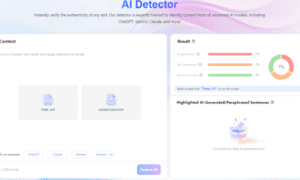In a world that’s always changing, it’s cool to think about homes that are ready for the future. That’s what Property Robots promises – houses that are built to last and adapt. It makes you wonder, “Property Robots’ Homes: Are They Really Future-Proof?”
Yes, Property Robots‘ homes are built with the future in mind. They use technology that’s designed to adapt and last for years to come.
Are you curious about how these homes can handle what the future brings? Keep on reading. We’re going to explore how Property Robots builds homes that are not just for today, but for tomorrow too. Let’s dive into a world where houses are smarter than ever.
Understanding Future-Proofing in Home Construction
Future-proofing a home is like making sure your smartphone can handle new updates for years. In home building, this means creating houses that won’t become outdated quickly. Future-proof homes are ready for changes, whether in family size, new technologies, or environmental shifts. Key elements include sustainability – using materials and designs that are friendly to our planet. Think of a house that uses solar panels or rainwater recycling.
Adaptability is another big part – homes that can change as your life does. Maybe a room that can turn from an office to a nursery? And technological integration, like smart home systems, where you control lights and heat with your phone, makes a home really future-proof. It’s like having a house that’s as smart as your favorite video game.
The Technology Behind Property Robots
Property Robots use some pretty awesome tech to build houses. They have these giant 3D printers that layer concrete to make walls and rooms. Imagine printing your own fort, but way bigger and stronger. This tech is super cool for future-proofing because it’s fast and flexible. It can create different designs easily, so if trends change, your house won’t look old-fashioned. But, there’s a catch.
While the construction method is futuristic, the tech isn’t perfect at adapting to every new gadget or environmental need just yet. It’s like having a really cool phone that doesn’t have every single app. So, Property Robots’ homes are a big step towards the future, but they’re still learning and growing, just like us. They’re on the right track, but there’s more to do before they’re the ultimate future-proof homes.
Picture a giant printer, but instead of ink, it uses concrete to build houses. That’s the cool tech behind Property Robots. These 3D printers stack layers of concrete to form walls and rooms, kind of like building a giant Lego house. This technology lets them create all sorts of shapes and designs, making each house unique.
But how does this help with future-proofing homes? Well, it’s super flexible. Need to change the design? The robots can adapt easily. However, there’s a bit of a downside. While the building process is futuristic, the houses aren’t fully equipped for every new technology that might come out. It’s like having a video game console that can’t play every new game yet.
So, while Property Robots’ homes are a step into the future, they’re not completely future-proof. They’re awesome at adapting shapes and designs, but when it comes to the latest tech features, there’s still room to grow.
Sustainability and Eco-Friendliness
When it comes to being kind to our planet, Property Robots’ homes have some cool points. They’re like eco-friendly superheroes in some ways. These homes are built to be energy-efficient. Imagine living in a house that keeps you warm in winter and cool in summer without using a ton of electricity. That’s what they do.
The materials they use are another big plus. Property Robots choose stuff that doesn’t hurt the environment as much. It’s like choosing a reusable water bottle over a plastic one. And because they build houses super fast, there’s less waste and less mess, which is great for Mother Nature.
However, even superheroes have weaknesses. The concrete used isn’t always the greenest option available. It’s a bit like using a bike that’s good for the environment, but not the best bike out there. So, while the homes are definitely stepping in the right direction for our planet, there’s still some work to do to make them the ultimate eco-friendly houses.
Adaptability and Longevity
Property Robots’ homes are like chameleons – they’re built to change as your life does. Need an extra room for a new hobby or a growing family? These homes can adapt. The technology allows for designs that can be altered in the future, which is pretty handy. It’s like having a backpack that can turn into a suitcase if you need more space.
Now, let’s talk about how long these homes last. Just like a sturdy pair of shoes that don’t wear out quickly, these robot-built homes are made to stand strong for years. The concrete they use is tough, so the houses can handle all sorts of weather, from blazing hot summers to freezing winters. However, like anything, they need a bit of care to stay in top shape. Think of it like taking care of your bike so it lasts longer.
Integration of Smart Home Technologies
When it comes to tech, Property Robots’ homes are like a glimpse into the future. They come with smart technologies – think controlling your lights or heating with your phone. It’s like living in a house from a sci-fi movie.
But the big question is, can these smart features keep up with the latest gadgets and gizmos? Right now, they’re pretty good. You’ve got the basics covered. But as for upgrading to the newest tech that hasn’t even come out yet, it’s a bit like waiting to see if your old video game console can play the latest games. The homes are ready for some new tech, but they might need a bit of tweaking to handle the really futuristic stuff. So, they’re smart, but there’s room for them to get even smarter.
Comparisons with Traditional Home Building Practices
| Aspect | Property Robots’ Homes | Traditional Homes |
| Speed of Construction | Super fast, a few days | Takes months |
| Design Flexibility | Highly adaptable, unique designs | Standard designs, less flexible |
| Future-Proofing | Built with future changes in mind | Often need renovations for big changes |
| Sustainability | More eco-friendly, less waste | Can be less eco-friendly, more waste |
| Technology Integration | Smart home features included | Often need additional installations |
| Personalization | Easy to customize | Limited customization options |
| Initial Challenges | Some minor issues, like leaks or cracks | Generally fewer initial issues |
| Longevity/Durability | Strong and durable, but new tech | Proven durability, traditional methods |
So, comparing robot-built homes with traditional ones is like comparing an electric car to a gasoline car. Each has its perks and downsides, but both get you where you need to go. Robot homes are quick to build and cool for the future, but they might need some tweaks. Traditional homes take longer to build but usually have fewer surprises.
Conclusion: Assessing the Future-Readiness
So, are Property Robots’ homes really ready for the future? Based on what we’ve seen and heard, it’s a bit of a mixed bag. On one hand, they’re super quick to build and have some awesome smart home features. They’re like the newest gaming console – fast and fun.
On the other hand, there are some kinks to iron out. It’s like when you get a new game, and it has a few glitches that need fixing. The technology is cool, but it’s not 100% there yet in terms of adapting to every future change.
For anyone thinking about a Property Robots home, here’s some advice: Do your research, think about what you really want in a home, and consider how it might need to change in the future. It’s like choosing a pet – you want to make sure it’s the right fit for you and your future.





























